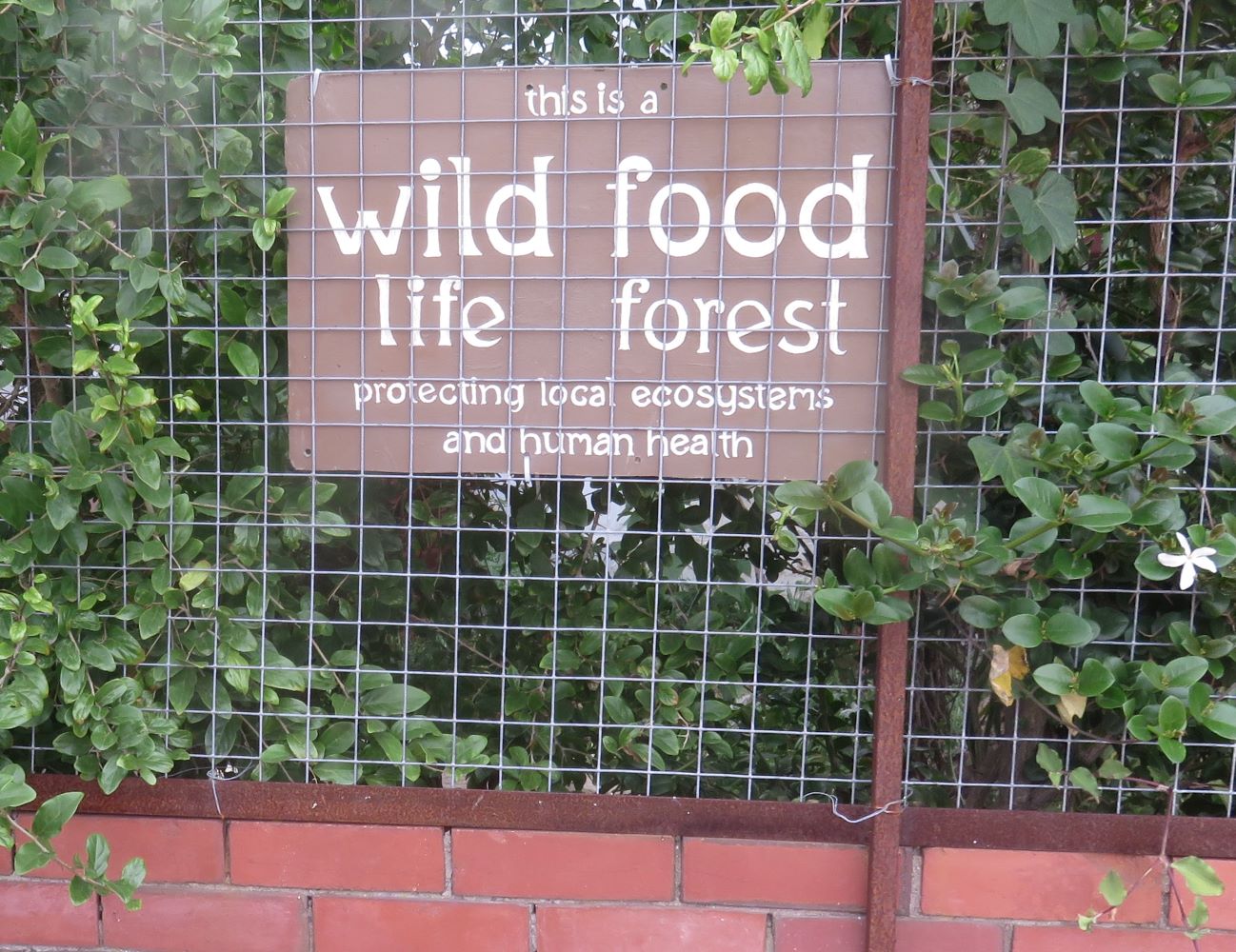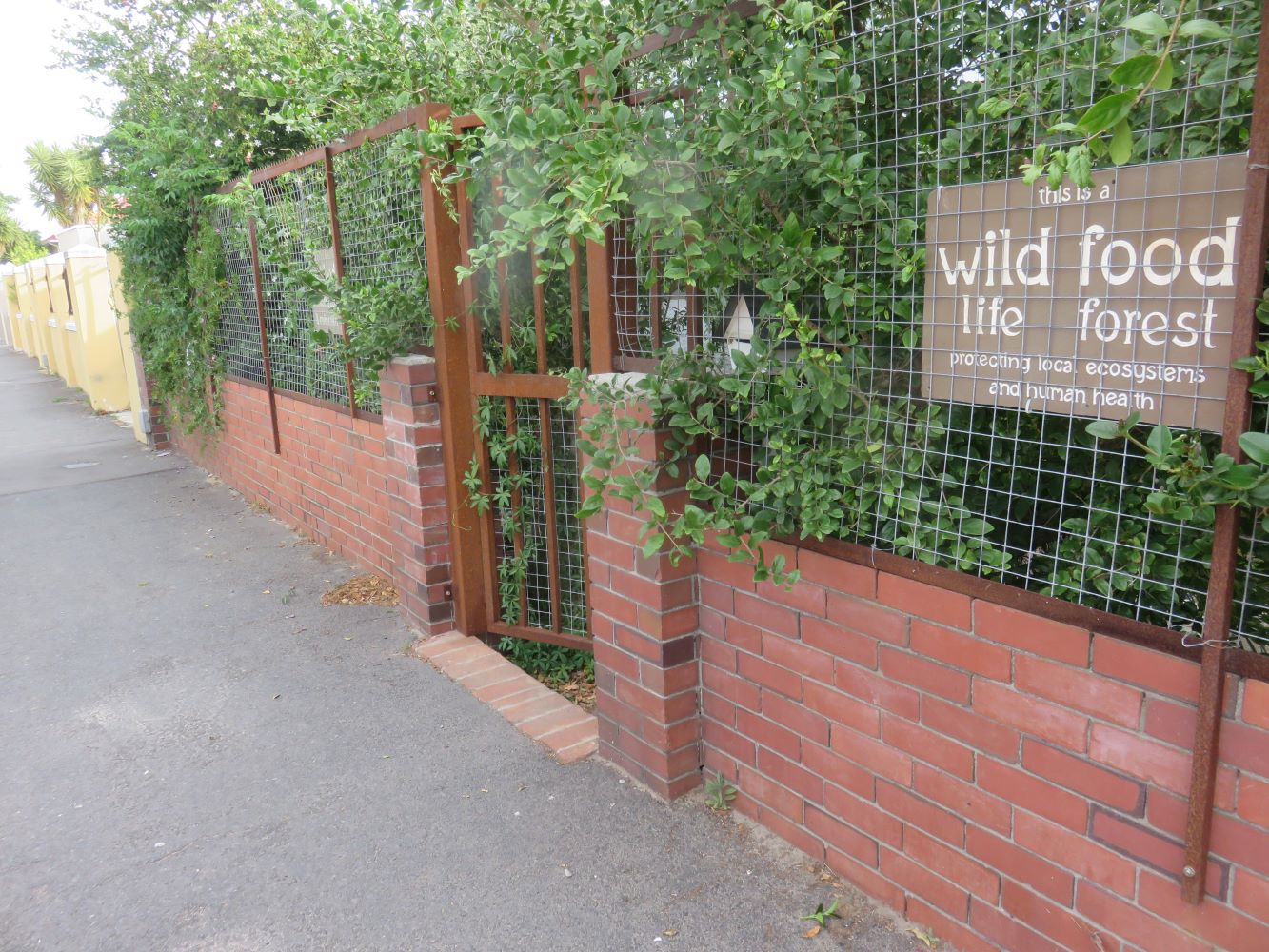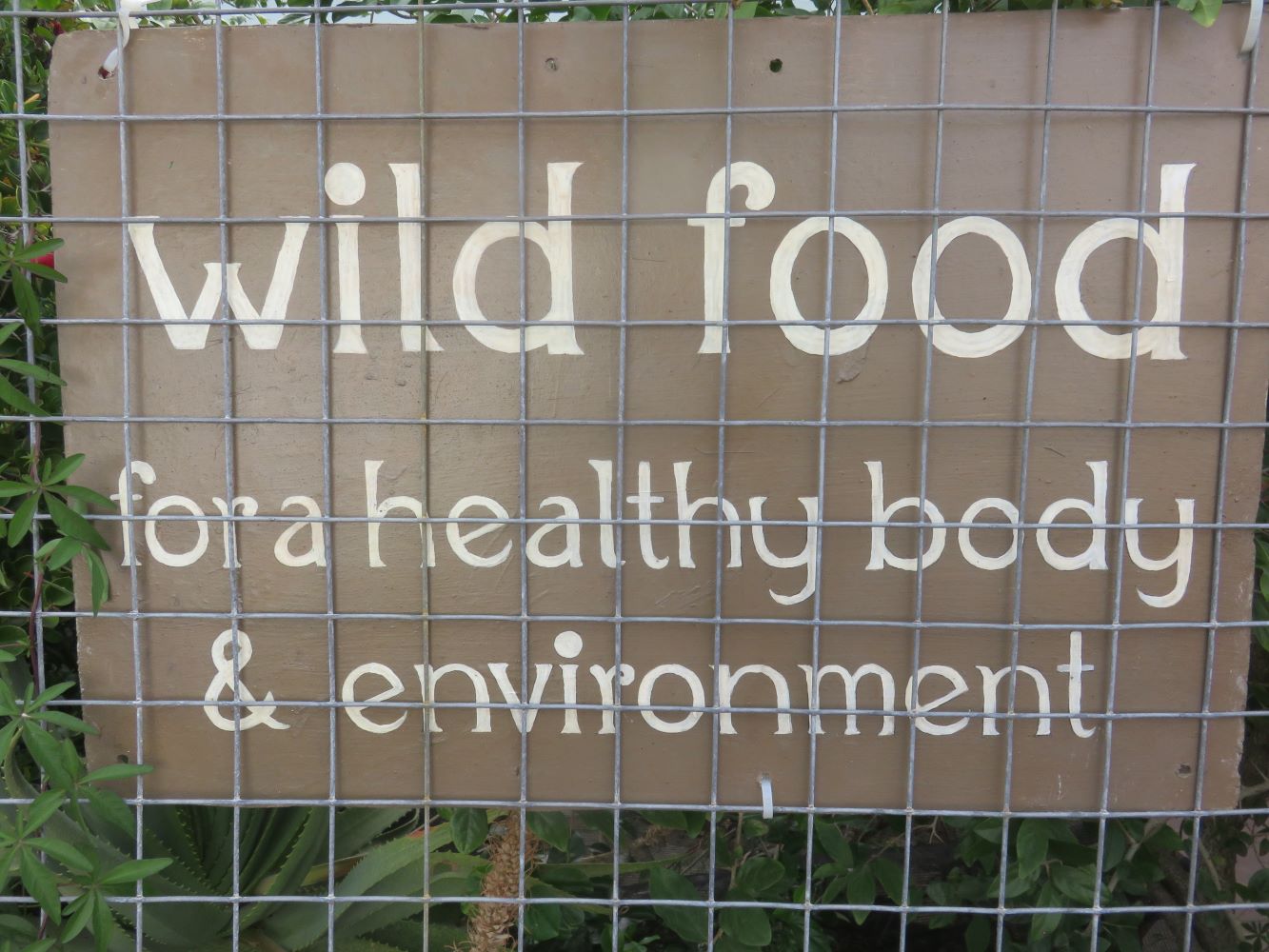Dear Reader, in this age of AI created content, please support with your goodwill someone who works harder to provide the human-made. Sign up at the top of the lefthand column or bottom of this page. You will receive my hand illustrated monthly newsletter RESTORE NATURE and access to the biodiversity garden design course as I write...and nothing else, I respect your time. I am also removing the advertizing as best I can as its become intrusive inappropriate and pays me nothing.
Growing against extinction !
Why you need to garden for wildlife with native food plants !
 A wildlife food forest means no more war between insects and humans ! Garden for wildlife and for your own consumption using native food plants.
A wildlife food forest means no more war between insects and humans ! Garden for wildlife and for your own consumption using native food plants.The aim of this article is to urge you to garden for wildlife using native food plants
I feel its so urgent that we need to garden for wildlife, I'd like to get everyone growing against extinction. One of the main pillars of planting for diversity is using native food plants. As a declaration of intent I've put these signs up on my fence for the neighbourhood to see, so that they understand what I've been doing for the last four years. The signs are hanging in a tangle of African fruit trees from our region that produce powerfully nutritious berries.
This article is part of my 'why' we should garden for wildlife, and some of my reasons for advancing this cause. In future articles I intend to cover how it can be done, expand on the many benefits, and show you the sort of research and learning process I've been going through to back this up.
This is then, the first outline of a mission statement.
 The street view of the wildlife garden full of native fruit trees.
The street view of the wildlife garden full of native fruit trees.Why should we care to garden for wildlife using native food plants ?
To save the planet
For the sake of the planet, home owners in cities all around the world need to garden for wildlife and create wild life friendly sanctuaries in their gardens using a majority of indigenous plants, and where possible, grow indigenous food plants. This is not just my opinion. There are globally significant reasons for doing this, but in Cape Town, it is especially important.
Vital importance of small private gardens !
The first important reason is strategic. Cities may have been written off by some people as places where an environmental turnaround can occur, but they are forgetting one thing. In many countries around the world private gardens exceed the area in nature reserves. Therefore the private gardens in cities are one of the most important locations in which citizens have the power to slow the loss of species by growing native plants, purely in terms of area. This idea has come home to gardeners in England, North America and India and to garden for wildlife specifically is becoming all the rage or increasing in prominence in the media and people's consciousness.
Private gardens in Cape Town are especially important. The city is located in the heart of, actually right on top of a hotspot of diversity in The Cape Fynbos Biome, the smallest plant biome in the world, and already extremely diverse. If private gardeners in Cape Town could garden for wildlife by planting native plants, we could help alleviate the mass extinction now under way in both plants, animals and soil microbes. This is because the plants support a plethora of small wildlife, and insects are mostly dependent on native plants, and in addition each plant has a different microbiome. We really need more diversity to be available in nurseries and to the parks and forests sections of the Cape Town Metro's local government.
We need to garden for wildlife because our lives depend on it.
Many people mourn the loss of apex predators and large animals, but all other life is falling away too, and the smaller life forms make up the basis of the pyramid of life or food chain, in which the large animals are a tiny minority at the apex. The apex predator's existence, and humans are one of these, is built on smaller life forms. We need to garden for wildlife to save our own lives. There is a reduction in biological diversity worldwide. The tiny animals lower in the food chain include insects, and many of those in the Cape have never been recorded and will be lost forever without being known to science. Birds, small mammals, reptiles, amphibians and microbes are also included in the small wild life whose diversity and numbers are plummeting downwards. With this we are going to lose our pollinators, beneficial garden predators, and our own gut microbiome diversity.
At the base of the pyramid are the plants. The plants support not only the tiny herbivores like aphids, caterpillars and snails, on which a host of other life feeds, but the sugary root exudates of the plants feed the soil microbiome in the rhizosphere around the roots. Every plant has an individual root microbiome, enriching the diversity of microbes in garden soil. A diversity of plants also sustains a greater diversity of insects. The majority of insects have co-evolved with plants in an area, to be host specific and dependent on the plants. The greater the plant diversity the greater the diversity in the food chain which leans upon it. Without the smaller life forms our ability to survive would collapse like the fragile pack of cards it is.
Thus native planting is vital to all kinds of diversity as well as human life. The wonderful advantage of diversity is that the greater the diversity of a system, the more resilient it is. This counts for the soil microbiome, and soil health, our gut microbiome and human health, the professions and market sectors and economic health, societies and social health, as well as populations of insects and plants in the garden. A diverse ecosystem of insects suppresses population explosions in pests.
 Beat global extinction and ensure your own health. See links below to my articles on the gut microbiome and the importance of wild food.
Beat global extinction and ensure your own health. See links below to my articles on the gut microbiome and the importance of wild food.We need to grow native food plants because the survival of humanity depends on it !
The most important kind of native plants to grow may be food plants. Growing indigenous food can help to combat the global loss of diversity in food plants. Many of the varieties of food plants which were common only a few decades ago are disappearing. Mankind is gradually making use of fewer and fewer food plants. This lack of genetic diversity in our food crops does not bode well for our food security in a world with a warming climate.
However there are many more reasons for growing indigenous food crops than diversity and food security in an uncertain future. Most indigenous foods have undergone less breeding and genetic manipulation than the crops which are now the world staples. These mega crops have usually been selected for harvest timing, rapid growth, high yield, shelf life and appearance and the last thing on the breeders mind was the nutrient density of the plant.
Through thousands of years of breeding we have lost much of the flavour and nutrients in food. The less breeding, or the more 'wild' a food is, the greater its nutrient value and the stronger its flavor. As an added bonus the wild crops are more fibrous, and the fiber acts as a prebiotic, feeding our gut flora, while the diverse plants all with their different leaf microbiomes enhance the diversity of our stomach flora as probiotics. A diverse gut flora is the foundation of preventative health. Wilder plants also contain many phytochemicals which are not nutrients but life preservers. High phytochemical levels in plants, the thing which gives them strong flavors, like spices, seems to increase longevity.
Native food plants may reduce agriculture's impact on climate change.
Another great reason for growing indigenous food crops is that they are adapted to local climate and soils. Exotic annual crops are incredibly destructive to the soil because of the biocide and fertilizer inputs and ploughing. But with locally adapted native plants, not only does their culture involve less labor, and less technology, it involves fewer inputs such as irrigation and chemicals and less soil disturbance. Nitrogen and ploughing increase greenhouse gas emissions, causing the much needed complex carbon molecules in the soil to off gas as CO2 and other greenhouse gases into the atmosphere. Agriculture is one of the biggest drivers of climate change. Growing native plants will unburden the environment, producing far fewer environmental toxins, and cutting the soil degradation, soil loss and erosion.
The way we garden and what we eat can help fight against global extinction.
Urban people concerned about global warming, insect, plant, and crop diversity loss and food security can contribute just by changing the way they garden and what they grow. We can garden for wildlife with intent, and plant as many native food plants as possible. But first of all these plants need to be available. People all over the world are fighting for food crop diversity through seed sovereignty, but we also need to grow many plants that are now wild to protect them from becoming extinct. With some experience and experiment we can master growing native food plants that are at present wild. This is necessary as more intense harvesting of wild food is not sustainable, yet wild food is necessary for our health.
We need to bring together the preservation of animal species diversity and food crop diversity, and we can do this in city gardens with their typical high input of very careful labor. Our garden does not have to turn a profit in a cut throat market.
Why the Cape's wild food plants could be very important in the future
It is annoying when people say the Cape's edible plants don't amount to much. They have obviously not tasted some of the best. They have forgotten that our food plants have sustained human being for longer than anywhere else on earth. For those which are smaller and less productive in quantitative terms, remember that European and American food plants have had as a head start of 5000 years of breeding and development. Wild wheat, olives, maize and cabbage really didn't look like much. It is farmers who have made them what they are. We do not know what new things will come out of an effort to cultivate the Cape's wild food plants.
The food plants at the Cape, one of the most diverse plant biomes in the world, have enormous potential, and have undergone little to zero intentional breeding. Why not at least give them a chance, because our climate at the Cape with its long dry season could produce plants which can overcome the hotter conditions of global warming and perhaps help provide greater food security world wide. For this we need vision, and to stop criticizing our wild food plants for the way they are now.
------
Home page for links to 300 articles on natural gardening
------
More wildlife gardening related articles
An exploration of the Cape Flats Nature Reserve
-------
Garden for wildlife by building insect hotels
------
Healthy habits include eating wilder and more diverse foods
------
A beginner's workshop on growing South African plants
------
------
Restore Nature Newsletter
I've been writing for four years now and I would love to hear from you
Please let me know if you have any questions, comments or stories to share on gardening, permaculture, regenerative agriculture, food forests, natural gardening, do nothing gardening, observations about pests and diseases, foraging, dealing with and using weeds constructively, composting and going offgrid.
SEARCH
Order the Kindle E-book for the SPECIAL PRICE of only
Prices valid till 30.09.2023
Recent Articles
-
garden for life is a blog about saving the earth one garden at a time
Apr 18, 25 01:18 PM
The garden for life blog has short articles on gardening for biodiversity with native plants and regenerating soil for climate amelioration and nutritious food -
Cape Flats Sand Fynbos, Cape Town's most endangered native vegetation!
Apr 18, 25 10:36 AM
Cape Flats Sand Fynbos, a vegetation type found in the super diverse Cape Fynbos region is threatened by Cape Town's urban development and invasive alien plants -
Geography Research Task
Jan 31, 25 11:37 PM
To whom it may concern My name is Tanyaradzwa Madziwa and I am a matric student at Springfield Convent School. As part of our geography syllabus for this
"How to start a profitable worm business on a shoestring budget
Order a printed copy from "Amazon" at the SPECIAL PRICE of only
or a digital version from the "Kindle" store at the SPECIAL PRICE of only
Prices valid till 30.09.2023







